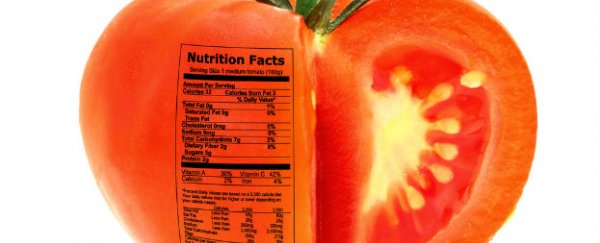Scientists have created barcodes that can be added directly to food before it's processed, enabling consumers and authorities to know exactly where each ingredient originated.
These days, food labels can claim anything, from 'real' fruit juice that is only 5 percent fruit, to 'organic' food that's been sprayed with pesticides. Fraudulent and mislabelled products are taking over the supermarket shelves, making grocery shopping a time-consuming chore.
In an effort to put an end to this trend, scientists are working on creating a DNA barcoding system, that will allow food to be tracked back to its origins - even after it's been processed. DNA barcoding is a system that allows scientists to identify where something came from by looking at short genetic markers that have been added to the product. While the technology was initially meant for finding out which species organisms belong to, a new study has shown that it can be used to trace the milk used to make cheese or yoghurt.
Scientists from the Swiss Federal Institute of Technology in Switzerland have developed DNA barcodes, around 100 base pairs long, that are encapsulated in silica particles, to protect them from degrading when the food is processed. The barcodes are detected using a technology called polymerase chain reaction (PCR), where the short target DNA sequence is amplified, allowing the barcode to be detected at very low concentrations. To test if their method would work, they added the DNA barcodes to milk and reported that even after it had turned into cheese or yogurt, the labels could still be identified.
"Most techniques work with specific isotope patterns, which are characteristic for a given region, or natural DNA patterns, which are characteristic for a given species," Robert Grass, chemical engineer and lead author of the paper, told Emma Stoye from the Royal Society of Chemistry. "Our technology is different, as we deliberately add our label to the foodstuff."
The team are now researching how to get the DNA barcodes into food products that undergo more complex processing and manufacturing, such as tracing the source of wheat found in bread.
Unsurprisingly, they expect that some people will oppose the idea of putting synthetic DNA into food, but they are continuing their research to see if the technology has potential to one day be a reality.
"Before labelled products could be marketed there would have to be considerable changes to food additives legislation across the EU," Duncan Campbell, a public analyst for West Yorkshire Analytical Services in the UK, who is not involved in the research, told the Royal Society of Chemistry. "Even if the silica particles didn't have any DNA in them, silica is only permitted for use as an additive in certain foods and milk is not one of them."
"The main question at hand is if the risk of adding our technology to foodstuff can be balanced with the need for foodstuff traceability,' Grass told Stoye from the Royal Society of Chemistry. "These are questions we cannot answer on our own – they require an open discussion with the public and regulatory bodies."
The findings are published in the Journal of Agricultural and Food Chemistry
